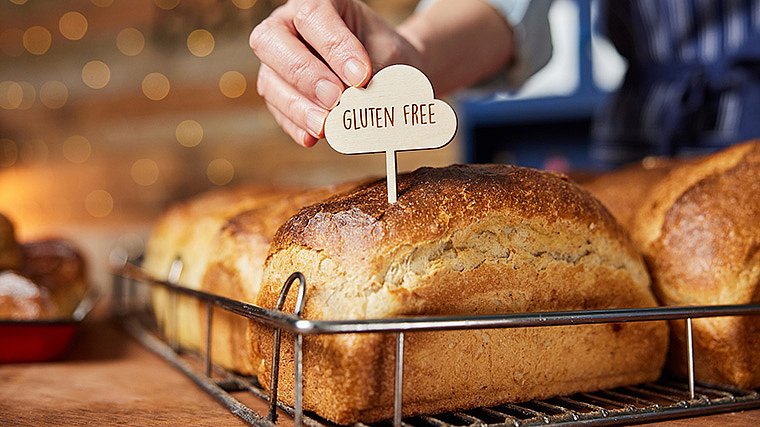Who can benefit from this diet?
Adherence to a gluten-free diet is a mainstay of treatment for gluten-dependent autoimmune conditions (celiac disease, gluten-associated ataxia, Duhring’s disease), immune disorders (wheat allergy, gluten allergy, baker’s asthma, wheat-dependent exercise-induced anaphylaxis) and diseases of unexplained etiology (non-celiac gluten sensitivity). Some of them require strict dietary compliance (for example, in celiac patients gluten produces toxic effects and causes atrophy of the intestinal villi, reducing the absorption surface for nutrients and vitamins), while others only call for a restriction of gluten intake. Switching to a gluten-free diet may also bring benefits to people:
- with other autoimmune conditions (Hashimoto’s disease, MS, RA, type 1 diabetes; these patients are at an increased risk of celiac disease, so appropriate tests should be performed before starting a diet),
- with neurological disorders (autism, schizophrenia, multiple sclerosis),
- with malabsorption syndrome (for example, patients after chemotherapy, antibiotic treatment or parasitic infections),
- with inflammatory bowel diseases and irritable bowel syndrome.
Rules of the gluten-free diet
As already mentioned, the main assumption of the gluten-free diet is total elimination of products containing gluten (a mixture of several proteins of plant origin: prolamins, gluteins, albumins, and globulins). Gluten is found in wheat, rye, spelt, barley, triticale, oats, and all other varieties of these crop species. They are used in a variety of foods: flour and groats (oatmeal, bulgur, semolina, barley, pearl barley, spelt), bread, confectionery (buns, croissants, cakes, cookies), pasta, bran, cereals, cereal coffee, muesli or even alcohol (beer, whisky, bourbon, gin).
People following a gluten-free diet should adhere to the principles of healthy nutrition and choose natural unprocessed foods including vegetables, fruit, eggs, dairy products, legumes, meat, fish, nuts, vegetable fats and pseudocereals (proso millet, buckwheat, tapioca, amaranth, maize, cassava, rice, sorghum, quinoa, and teff).
Read food labels
Gluten is widely used in the food processing industry, so reading food labels and paying attention to ingredients are crucial. Be especially careful when buying ready-made sauces and dressings, yogurts, condiments, cold cuts, wiener sausages, delicatessen products, canned fish and meat, and sweets and savory snacks. Gluten can even be found in some medicines! The alarm bells should be ringing when you see these ingredients listed on the label: wheat or durum wheat (semolina), modified starch E-1404, E-1410, E-1412-14, E-1420, E-1442, E-1450-51, wheat germs, cake flour, sifted flour, extra fine flour, barley malt or wheat fiber.
Why is it so important? For people with celiac disease, eating even the smallest amount of gluten is harmful. A much better solution is to prepare gluten-free meals yourself. In this way, you can be sure that you have all the ingredients under control. To improve the safety of gluten-allergic people, it is also advisable to avoid using the same cutting boards, cutlery, strainers, plates and kitchen utensils as other household members. In addition, individuals with gluten allergy should not use the same butter, jams, sandwich spreads etc. as other people in the household. Such food products may contain bread crumbs with the harmful protein. Another precaution is not to fry food in the same fat in which gluten-containing products were previously fried.
MultiLife’s gluten-free diet
Today, you can find all kinds of ready-made gluten-free products in grocery stores. Unfortunately, many of them are highly processed and low in fiber, B vitamins and minerals (manganese, zinc, copper, iron, calcium, and selenium), but high in sugar and artificial additives. Eating such foods is associated with an increased risk of deficiency of major nutrients. So the best option for followers of the gluten-free diet is to prepare meals by themselves, based on naturally gluten-free foods. Such products are the foundation of MultiLife’s gluten-free diet. The eating plan consists of gluten-free cereals (millet and buckwheat groats, rice, quinoa or amaranth), but also multi-ingredient smoothies, salads, cottage cheese, and yogurts with various additives.
References
- Molina-Infante J, Santolaria S, Montoro M, Esteve M, Fernández-Bañares F). Non-celiac gluten sensitivity: a critical review of current evidence. Gastroenterol Hepatol 2014; 37(6): 362-71
- https://celiakia.pl / [dostęp 5.04.2022]
- Daniel V DiGiacomo, Christina A Tennyson, Peter H Green, Ryan T Demmer. Prevalence of gluten-free diet adherence among individuals without celiac disease in the USA: results from the Continuous National Health and Nutrition Examination Survey 2009-2010. Scand J Gastroenterol 2013;48(8):921-5
- Abhik Roy, Monika Laszkowska, Johan Sundström et al. Prevalence of celiac disease in patients with autoimmune thyroid disease: A meta-analysis. Thyroid 2016 Jul;26(7):880-90
- Anamaria Cozma-Petruţ, Felicia Loghin, Doina Miere, Dan Lucian Dumitraşcu. Diet in irritable bowel syndrome: What to recommend, not what to forbid to patients! World J Gastroenterol 2017; 23(21):3771-3783
